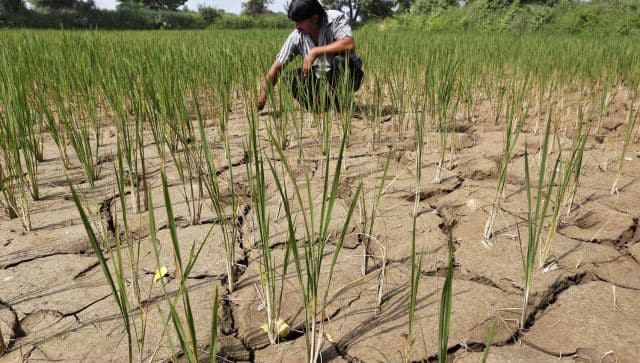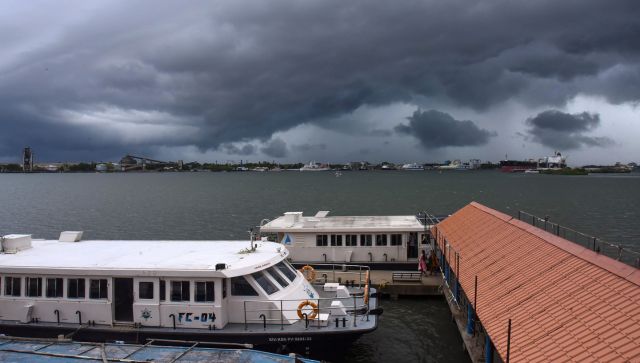The El Niño phase is finally here, according to the National Oceanic and Atmospheric Administration (NOAA). While it is currently weak, it is expected to become a strong event by winter. “We expect El Niño to continue into the winter, and the odds of it becoming a strong event at its peak are pretty good, at 56 per cent. Chances of at least a moderate event are about 84 per cent”, the United States science agency announced on Thursday (8 June). El Niño will likely lead to extreme temperatures globally. Also, it is not good for the monsoon in India. What is this weather phase and how does it affect rainfall in India? Let’s take a closer look. What is El Niño? It is a part of the El Niño Southern Oscillation (ENSO), a natural climate phenomenon related to weather and ocean.
ENSO has two phases – El Niño and La Niña.
While El Niño, meaning “little boy” in Spanish, is a warm phase, La Niña or “little girl” is the cold phase. An El Niño event is declared when the sea surface temperatures (SSTs) in the central and eastern Pacific Ocean rise at least 0.5C above average, as per BBC. These events generally take place at irregular intervals every two to seven years, usually lasting nine to 12 months. La Niña episodes are less frequent than El Niño. During El Niño, the atmospheric pressure above the ocean falls. When ENSO is in the neutral phase, trade winds blow west along the equator, pushing the warm water from South America toward Asia, according to NOAA. “During El Niño events, these winds weaken or reverse, sending warm surface waters eastwards instead,” reported BBC. The last El Niño event was seen in 2018-19. [caption id=“attachment_12716622” align=“alignnone” width=“640”] El Niño has been linked to intense heatwaves, floods, and droughts globally. Reuters File Photo[/caption] At the time of a La Niña episode, stronger-than-usual trade winds send warm water towards Asia. “Off the west coast of the Americas, upwelling increases, bringing cold, nutrient-rich water to the surface,” explains NOAA article. In India, La Niña is linked to good rainfall. However, the opposite is the case with El Niño. How does El Niño affect the Indian monsoon? During El Niño events, places like southeast Asia, Australia and central Africa experience drier weather, noted BBC.
El Niño has been linked to intense heatwaves, floods, and droughts globally. Reuters File Photo[/caption] At the time of a La Niña episode, stronger-than-usual trade winds send warm water towards Asia. “Off the west coast of the Americas, upwelling increases, bringing cold, nutrient-rich water to the surface,” explains NOAA article. In India, La Niña is linked to good rainfall. However, the opposite is the case with El Niño. How does El Niño affect the Indian monsoon? During El Niño events, places like southeast Asia, Australia and central Africa experience drier weather, noted BBC.
El Niño has been associated with intense heatwaves, floods, and droughts globally.
In India, it has been noted that monsoon becomes weaker and “less reliable” during El Niño years, as per Reuters. The southwest monsoon finally hit India with the onset in Kerala on Thursday after the “longest delay” in four years, reported Reuters. Now, experts are warning that due to
El Niño
, India is unlikely to record normal rainfall this year. “Usually, an El Niño starts brewing in the Pacific during summer and reaches peak intensity by winter. This year, global models are expecting El Niño to be in place by June itself. El Niño events interact with the global atmospheric circulation and trade winds. The monsoon winds are also part of this large trade wind system. During El Niño events, the monsoon winds are slow to pick up, and are relatively weak. An El Niño during the current monsoon season hence means a delayed onset and deficit rainfall. Forecasts from the India Meteorological Department (IMD) already indicate dry conditions over northwest and central India,” Roxy Mathew Koll, a climate scientist at the Indian Institute of Tropical Meteorology (IITM), had told Hindustan Times (HT) on 5 June. According to Reuters, El Nino weather events have occurred 15 times over the last 70 years, out of which India logged normal or above-normal rainfall only six times. In the last four El Nino years, India has constantly faced drought conditions and a severe decrease in rainfall. ALSO READ:
Burning Hot: These regions are likely to witness record-smashing heat waves
Monsoon rains can also vary depending on weak, medium or strong El Nino events. In 1997, a strong El Nino event led to India recording 102 per cent of its normal rainfall. [caption id=“attachment_12716632” align=“alignnone” width=“640”] Experts are warning that due to El Niño India is unlikely to record normal rainfall. Reuters File Photo[/caption] However, India received only 78.2 per cent of its normal showers in 2009 when there was a weak El Nino episode, reported Reuters. The weather phenomenon had also caused severe drought in the southern and western regions and highly delayed rainfall in the country that year, as per Economic Times (ET). It is predicted 2023 will see a strong El Nino weather pattern. Warning about extreme temperatures this year, Koll told HT: “If this is a strong El Nino as predicted by global models, then this year could be one of the warmest years”. Impact on agriculture The IMD has predicted a 70 per cent possibility of El Niño affecting monsoon rains in June, July and August. According to ET, the states of Punjab, Haryana, Rajasthan and Uttar Pradesh could record below-normal levels of rainfall during the second half of the monsoon season – between July to September – this year. This is not good news for the agriculture sector which is significantly dependent on monsoon for good produce. Monsoon impacts key crops such as rice, wheat, sugarcane, soybeans, and peanuts, noted Reuters. Below-normal rainfall can lead to a surge in food prices due to shortages of these crops, further stoking inflation. Meanwhile, El Niño is also likely to cause warm winters on the Indian subcontinent.
Experts are warning that due to El Niño India is unlikely to record normal rainfall. Reuters File Photo[/caption] However, India received only 78.2 per cent of its normal showers in 2009 when there was a weak El Nino episode, reported Reuters. The weather phenomenon had also caused severe drought in the southern and western regions and highly delayed rainfall in the country that year, as per Economic Times (ET). It is predicted 2023 will see a strong El Nino weather pattern. Warning about extreme temperatures this year, Koll told HT: “If this is a strong El Nino as predicted by global models, then this year could be one of the warmest years”. Impact on agriculture The IMD has predicted a 70 per cent possibility of El Niño affecting monsoon rains in June, July and August. According to ET, the states of Punjab, Haryana, Rajasthan and Uttar Pradesh could record below-normal levels of rainfall during the second half of the monsoon season – between July to September – this year. This is not good news for the agriculture sector which is significantly dependent on monsoon for good produce. Monsoon impacts key crops such as rice, wheat, sugarcane, soybeans, and peanuts, noted Reuters. Below-normal rainfall can lead to a surge in food prices due to shortages of these crops, further stoking inflation. Meanwhile, El Niño is also likely to cause warm winters on the Indian subcontinent.
With inputs from Reuters Read all the Latest News , Trending News , Cricket News , Bollywood News , India News and Entertainment News here. Follow us on Facebook , Twitter and Instagram .
)